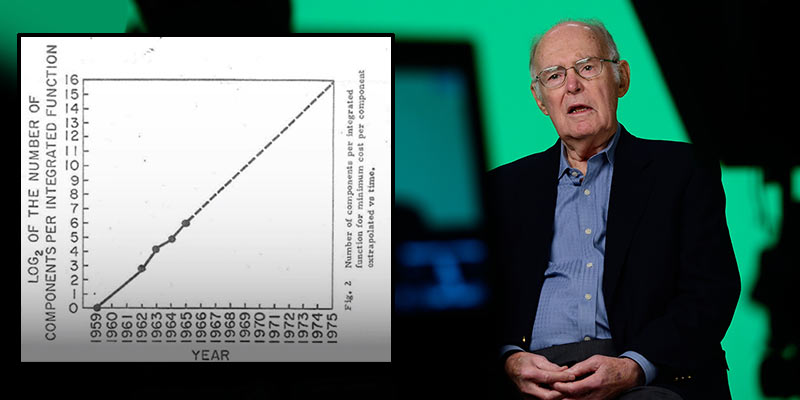- World
- Mar 26
Who was Gordon Moore? What is Moore’s Law?
Intel Corp co-founder Gordon Moore, a pioneer in the semiconductor industry whose “Moore’s Law” predicted a steady rise in computing power for decades, died in Hawaii at the age of 94.
Moore was a giant in the technological transformation of the modern age, helping companies bring ever more powerful chips to smaller and smaller computers.
Forbes magazine estimated his net worth at $7.2 billion.
What is Moore’s Law?
• In an article in 1965, Moore first coined a theory that later became known as “Moore’s Law”. It stated that the number of transistors on an integrated circuit would double every year.
• Integrated circuits will lead to such wonders as home computers — or at least terminals connected to a central computer — automatic controls for automobiles, and personal portable communications equipment, Moore wrote in his paper.
• With his 1965 prediction proven correct, in 1975 Moore revised his estimate to the doubling of transistors on an integrated circuit every two years for the next 10 years.
• Regardless, the idea of chip technology growing at an exponential rate, continually making electronics faster, smaller and cheaper, became the driving force behind the semiconductor industry and paved the way for the ubiquitous use of chips in millions of everyday products.
• It became a standard for the tech industry’s progress and innovation.
Co-founder of Intel Corporation
• Moore was born in San Francisco on January 3, 1929, and grew up in the tiny nearby coastal town of Pescadero. He attended San Jose State University, then transferred to the University of California, Berkeley, where he graduated with a degree in chemistry.
• After getting his Ph.D. from the California Institute of Technology in 1954, he worked briefly as a researcher at Johns Hopkins University.
• His entry into microchips began when he went to work for William Shockley, who in 1956 shared the Nobel Prize for physics for his work inventing the transistor. At the Shockley Semiconductor Laboratory where he met future Intel co-founder Robert Noyce.
• Less than two years later, Moore and seven colleagues left Shockley Semiconductor Laboratory after growing tired of its namesake’s management practices.
• The defection by the “traitorous eight”, as the group came to be called, planted the seeds for Silicon Valley’s renegade culture, in which engineers who disagreed with their colleagues didn’t hesitate to become competitors.
• The Shockley defectors in 1957 created Fairchild Semiconductor, which became one of the first companies to manufacture the integrated circuit, a refinement of the transistor.
• Fairchild supplied the chips that went into the first computers that astronauts used aboard spacecraft.
• In 1968, Moore and Robert Noyce, one of the eight engineers who left Shockley, again struck out on their own. They founded Intel, an abbreviation of Integrated Electronics.
• Moore became Intel’s chief executive in 1975. His tenure as CEO ended in 1987, though he remained chairman for another 10 years. He was chairman emeritus from 1997 to 2006.
• He received the National Medal of Technology from President George H.W. Bush in 1990. Moore received the Medal of Freedom, the nation’s highest civilian honour, from President George W. Bush in 2002.
• In 2005, he referred to Moore’s Law as a lucky guess that got a lot more publicity than it deserved.
• Moore later became known for his philanthropy when he and his wife established the Gordon and Betty Moore Foundation, which focuses on environmental conservation, science, patient care and projects in the San Francisco Bay area. It has donated more than $5.1 billion to charitable causes since its founding in 2000.
Manorama Yearbook app is now available on Google Play Store and iOS App Store

